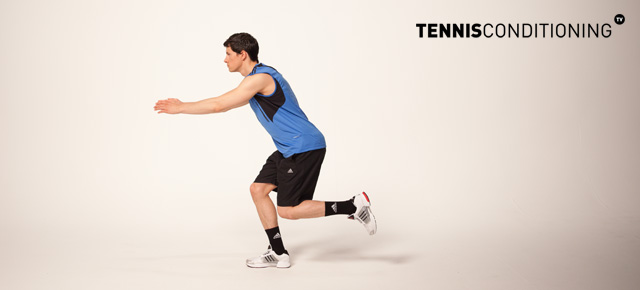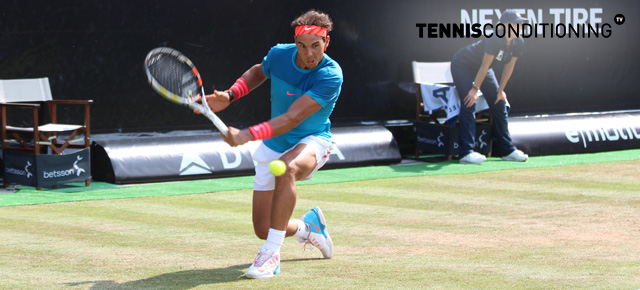Balance and stability training is important for every athlete because it directly affects their performance but how?
 http://www.tennis-conditioning.com/wp-content/uploads/2015/06/Optimize-Your-Performance-FB-AD-300x157.jpg 300w, http://www.tennis-conditioning.com/wp-content/uploads/2015/06/Optimize-Your-Performance-FB-AD.jpg 1200w" sizes="(max-width: 785px) 100vw, 785px" />
http://www.tennis-conditioning.com/wp-content/uploads/2015/06/Optimize-Your-Performance-FB-AD-300x157.jpg 300w, http://www.tennis-conditioning.com/wp-content/uploads/2015/06/Optimize-Your-Performance-FB-AD.jpg 1200w" sizes="(max-width: 785px) 100vw, 785px" />
Before I provide you with an explanation for why balance and stability training is important for tennis players to improve performance let’s define both terms first so we are all on the same page.
Definition of Balance & Stability
Balance can be defined as the ability to maintain body equilibrium, where all force couples equal zero (cancel each other out); it can be thought of as “static equilibrium”.
On the other hand, stability can be defined as the ability of an object (e.g. athlete) to maintain body equilibrium while in motion; it can be thought of as “dynamic equilibrium” or “dynamic balance”.
 http://www.tennis-conditioning.com/wp-content/uploads/2016/08/Tumbnail-Why-Balance-Stability-Training-Is-Important-640x290-BLOG-300x135.jpg 300w" sizes="(max-width: 640px) 100vw, 640px" />
http://www.tennis-conditioning.com/wp-content/uploads/2016/08/Tumbnail-Why-Balance-Stability-Training-Is-Important-640x290-BLOG-300x135.jpg 300w" sizes="(max-width: 640px) 100vw, 640px" />
Why Balance & Stability Training Is Important
Balance and stability training are training components to improve speed economy and agility. On the one hand speed economy improvements assure that minimal excess energy is expended (wasted) to perform the athletic movement and on the other hand agility improvements allow the athlete to change direction more effectively.
Stability training allows for better agility by establishing force & counter-force couples but oftentimes people think of balance training as the attempt of someone to hold a steady position, which is the state of static equilibrium, and all force couples equal zero (0).
While playing tennis the athlete is almost always in motion and hence needs to deal with stability (dynamic balance), maintaining dynamic equilibrium.

http://www.tennis-conditioning.com/wp-content/uploads/2012/06/Tumbnail-Aerobic-Energy-System-Efficiency-BLOG-300x135.jpg 300w" sizes="(max-width: 640px) 100vw, 640px" /> Rafael Nadal
During dynamic equilibrium all force couples are controlled to a point of stability. The force couples don’t have to be equal to zero, which is where the athlete is completely static, but the differential has to be small enough that the athlete can control the center of mass/gravity within the base of support (legs) to maintain stability.
Since agility can be defined as the ability to change direction, it is obvious that maintaining stability during directional change depends on how well the athlete can manage his/her body and maintain stability.

http://www.tennis-conditioning.com/wp-content/uploads/2016/08/Email-Contact-Philipp-Halfmann-640x290-BLOG-300x135.jpg
300w" sizes="(max-width: 640px) 100vw, 640px" /> Click on the picture to go to our YouTube channel!In addition, stability training affects performance because the athlete needs to be in control (stable) during stroke production
That explains why agility and stability training (dynamic balance) are directly related to each other and why an athlete needs to have good balance and dynamic stability capabilities in order to change direction on the court effectively and improve overall performance!
Prime Mover & Stabilizer Relationship in Force Application
The relationship between prime mover- and stabilizer strength is important because athletes are only as strong as their weakest link!
For example, if an athlete squats 250 lbs using a smith machine (2 rods that only allow the bar to move upward or downward) then the 250 lbs will not translate into the Squat because the stabilizers will fatigue and the force needed to lift the resistance off the legs cannot be transferred effectively.
In other words, athletes often will not have the stabilizer strength, which is the disconnection between prime mover strength and energy transfer in force application.

http://www.tennis-conditioning.com/wp-content/uploads/2016/08/Squat-Smith-Machine-640x290-BLOG-300x135.jpg 300w" sizes="(max-width: 640px) 100vw, 640px" /> Squat – Smith Machine
So there might be an athlete that can do heavy squat or bench presses but they don’t perform as well on the court as the athlete that can do Power Cleans very well.
Therefore, total force production (how strong the athlete is) is less important with respect to performance than how well the athlete can manage their body weight.
Therefore, we also use balance and stability training to enhance stabilizer strength to maximize energy transfer and hence athletic capabilities.

http://www.tennis-conditioning.com/wp-content/uploads/2012/11/Share-with-Friends-Cover-640x290-BLOG-300x135.jpg
300w" sizes="(max-width: 640px) 100vw, 640px" /> Use Social Media Buttons at the Bottom of the PageThe post Why Balance & Stability Training Is Important appeared first on Tennis Conditioning.


















